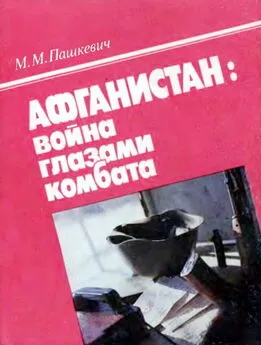Михаил Супотницкий - Биологическая война (Часть 3)
- Название:Биологическая война (Часть 3)
- Автор:
- Жанр:
- Издательство:Кафедра, Русская панорама
- Год:2013
- Город:Москва
- ISBN:978-5-93165-328-0
- Рейтинг:
- Избранное:Добавить в избранное
-
Отзывы:
-
Ваша оценка:
Михаил Супотницкий - Биологическая война (Часть 3) краткое содержание
Часть 3. Частная неправильная эпидемиология.
Биологическая война (Часть 3) - читать онлайн бесплатно полную версию (весь текст целиком)
Интервал:
Закладка:
Noble J., Rich J. Transmission of smallpox by contact and bv aerosol routes in Macaca irus // Bull. Wld. Hith. Org. 19°9 V. 40. P. 279–286.
Noguchi P. Risks and benefits of gene therapy // N. Engl, J. Med. 2003, V, 348, № 3, P. 193–192.
Noguchi T., Arakawa O. Tetrodotoxin — distribution and accumulation in aquatic organisms, ana cases of human intoxication // Mar. Drugs. 2008. V. 6. P. 220–242.
Noguchi Т., Ebesu J. S. M. Puffer poisoning: epidemiology and treatment // J. Toxicol. 2001 V. 20. P. 1–10.
Nordmann P.. PoirelL. Emerging carbapenemases in gramnegative aerobes // Clin. Microb. Infect. 2002. V. 8. P. 321–331.
Oberddrster G., Oberdurster K., Oberdurster J. Nanotoxicology: an emerging discipline evolving from studies of ultratine particles // F nviron. Health. Perspect. 2005. V. 113. P. 823–839.
Ohana P., Gofru O., Sayesh S. et at. Regulatory sequences of the H19 gene in DNA based therapy of bladder cancer // Gene. Ther. Mol. Biol. 2004. V. 8. P. 181–192.
Okano H., Masuoka H., Kamei S. et al. Rhahdomyolysis and myocaraial damage induced by palytoxin, a toxin of blue humphead parrottish // Int. Med. 1998. V. 37. P. 330–333.
Olson К. B. Aum Shinrikyo: once and future threat // Emerg. Infect. Dis. 1999. V 5. P. 513–514.
Omsland A., Beare P. A., Hill J. et al. Isolation from animal tissue and genetic transformation of Coxiella burnetii are facilitated by an improved axenic growth medium // Appl. Environ. Microbiol. 2011. V. 77. P. 3720–3725.
Omsland A. et al. Host cell-free growth ofthe Q fever bacierium Coxiella burnetii // Proc. Natl. Acad, Sci. USA. 2009. V. 106. P. 4430–4434.
Ong C., Huey Ooi C., Wang D. et al. Patterns of large-scale genomic varianon in virulent and avirulent Burkholderia species // Genome Res. 2004. V. 14. P. 2295–2307.
Overholt E. L., Tigertt W. D., Kadull P. J. et al. An analysis of forty-two cases ot laboratory-acquired tularemia // Amer. J. Med. 1961. V. 30. № 5. P. 785–806.
Paessler S., Fayzulin R. Z., Anishchenko M. et al. Recombinant Sindbis/Venezuelan equine encephalitis virus is highly attenuated and immunogenic // J. Virol. 2003. V. 77. № 17. P. 9278–9286.
Paessler S., Yun N Е., Judy В. М. et al. Alpha-beta Т cells provide protecuon against lethal encephalitis in the murine model of VEEV infection // Virology. 2007. V. 367. № 2. 307–323.
Pahlitzsch R., Hammarin A., Widell A. A case of facial cellulitis and necrotizing lymphadenitis due to cowpox virus infection // Clin. Infec. Dis. 2006. V. 43. P. 737–742.
Palese P. RNA virus vectors: where are we and where do we need to go? // Proc. Natl. Acad. Sci. USA. 1998. V. 95 № 22. P. 12750-12752.
Pardo-Lypéz L., Comes I., Rausell С. et al. Structural changed of of the eCry1Ac oligomeric pre-pore from Bacillus thuringiensis // Biochemi. 2006. V. 45. P. 10329-10336.
Pardo-Lypéz L., Munoz-Garay C., Porta H. Strategies to improve the insecticidal activity of Cry toxins from Bacillus thuringiensis // Peptides. 2009 V 30. № 3. P. 589–595.
Pardridge W. M. Drug and gene targei.. ig to the brain with molecular Trojan horses // Nat. Rev. Drug Discov. 2002. V. l. P. 131–139.
Park K. W., Kim D.. ParkC.Y.etal Fatal systemic infection with multifocal liver and lung nodules caused by Brucella abortus // Am. J. Trop. Med. riyg. 2007. V. 77 № 6. P. 1120–1123.
Partikian A., Mitchell W. G. Iatrogenic botulism in a child with spastic quadriparesis // J. Child. Neurol. 2007. V. 22. № 10. P. 1235–1237.
Patcka J., Splino M., Mgrka V. Botulism and bioterrorism: how serious is this i iroblem? // Acta Memoa (Hradec Kralove). 2005. V. 48. № 1. P. 23–28.
Patra G., Vaissaire J. E., Weber-Levy M. et al , Molecular characteiization of Bacillus strains involved in outbreaks of Anthrax in France in 1997 // J. Clin. Microbiol. 1998. V. 36. № 11. P. 3412–3414.
Patric W. III. Biological warfare scenanos // Firepower in the Lab. Automat, in the Fight against Infect. Dis. and Bioter. / S. P. Layne (Eds.). Washington, D. C.: Joseph Henry Press. 7001. P. 215–223.
Pavlin J. A. Epidemiology of bioterronsm // Emerg. Infect. Dis. 1999. V. 5. № A P. 528–530.
Pavlov V. М., Mokrievich A. N. Cryptic plasmid pFNL10 from Francisella novicida-like F6168: the base of plasmid vectors for Francisella tuiarensis // FEMS Immunol. Med. Microbiol 1996. V. 13. P. 253—256
Paweska J., Sewlall N. H., Ksiazek T. J. et al. Nosocomial outbreak of novel arenavirus infection: Southern Africa // Emerg. Infect. Dis. 2009. V 15 № 10. P. 1598–1602.
Pearce L. B., First E. R., Maccallum R. D. et al. Pharmacologic characteiization of botulinum toxin for basic science and medicine // Toxicon. 1997. V. № 9. P. 1373–1412.
Pearson Т., Busch J. D., Ravel J. et al. Phylogenetic discovery bias in Bacillus anthracis using single-nucleou-Je polymorphisms from whole-genome sequencing // Proc. Natl. Acad. Sci. USA. 2004. V. 101. P. 13536-13541.
Pechous R., McCarthy T. R, Zahrt Т. C. Working toward the future insights into Francisella tuiarensis pathogenesis and vaccine development // Microbiol. Mol. Biol. Rev. 2009. V. 73. № 4. P. 684–711.
Peraica М., Radic B., Lucic A. et al. Toxic effects of mycotoxins in humans // Bulletin of the World Health Organization. 1999. V. 77. № 9. P. 754–766.
Pema N. Т., Mayhew G. F., Posfai G. et al. Molecular evolution of a pathogenicity island from entero-hemorrnagic Escherichia coll 0157:H7 // Infect Immun. 1998. V 66. P. 3810–3817.
Peter M. Bennett integrons and gene cassettes: a genetic construction kit for bacteria // J. Antirmcrob. Che-mother. 1999. V. 43. P. 1–4.
Petersen J. М., Carlson J. K., Dietrich G. et al. Multiple Francisella tuiarensis subspecies and с lades tularemia outbreak, Utah // Emerg. Infect. Dis. 2008 V. 14. № 12. P. 1928–1930.
Peterson A. T., Carroll D. S., Mills J. N. et al. Potential mammalian filovirus reservoirs // Emerg. Infecl Dis. 2004. V. 10. № 12. P. 2073–2081.
Petosa C., Collier P., Klimpel K. R. et al. Crystal structure of the anthrax toxin protective antigen // Nature. 1997. V 385, № 6619. P. 833–838.
Pfeffer М., Dobler G. R. Emergence of zoonotic arboviruses by animal trade and migration // Parasites & Vectors. 2010. V. 3. № 35 (http://www.parasitesandvectors.eom/content/3/l/35).
Pichla-Golton S. L., Lin S. W., Hensley S. E. et al. Effect of preexisting immunity on an adenovirus vaccine vector: in vitro neutralization assays fail to predict inhibition by antiviral ant.body in vivo // 1. Virol. 2009. V. 83. P. 5567–5573.
Pilo P., Perreten V., Frey J. Molecular epidemiology of Bacillus anthracis: determining the correct ongin // Appl. Environ. Microbiol. 2008 V 74. № 9 P. 2928–2931.
Piskurek O., Okada N. Poxviruses as possible vectors for horizontal transfer of retroposons from reptiles to mammals // Natl. Acad. Sci, USA. 2007. V. 104. № 29. P. 12046-12051.
Pitt J. I. Toxigenic fungi which are important? // Med. Mycol. 2000. V. 38 (Suppl. 1). P. 17–22.
PIuta K., Kacprzak M. M. Use of HIV as a gene transfer vector // Act. Biochim. Pol. 1009. V. 56. P. 531—595
Poli M. A., Rivera V. R., Hewetson J. F. et al. Detection of ricin by colorimetric and cnemiluminescence ELISA // Toxicon. 1994. V. 32. № 11. P. 1371–1377.
Pollitzer R. Plague stud.es. 4. Pathology // Bull. World Hlth Org. 1952. V. 5. P. 337–376.
Pomerantsev A. P., Staritsyn N. A. Behavior of heteroiogous recombinant plasmid pCET in cells of Bacillus anthracis // Genetika 1996. V. 32. № 4. P. 500–509.
Pomerantsev A. P., Sukovatova L. V., Marinin L. I. Characterization of a Rif-R population of Bacillus anthracL // Antibiot. Khimioter. 1993. V. 38. № 8–9. P. 34–38.
Portnoy D., Faikow S. Virulence-associated plasmids from Yersinia enterocolitica and Yersinia pest s // J. Bacteriol. 1981. V. 148. P. 877–883.
Powell A., Crozier J., Hodgson H. et al. A case of septicaemic anthrax in an intravenous drug user // В ViC Infectious Diseases, 2011 (http://www.biomedcentral com/1471-2334/11/21/).
Prabhu В. М., Ali S. F., Murdock R. C. et al. Copper nanoparticles exert size and concentration dependent toxicity on somatosensory neurons of rat // Nanotoxicol. 2010. V. 4. P. 150–160.
Pratt W. D., Gibbs P., Schmaljohn A. L. Use of telemetry to assess vaccine-induced protection against parenteral and aerosol infect.ons of Venezuelan equine encephalitis virus in non-human primates // Vaccine. 1998. V. 16. № 9-10. P. 1056–1064.
Price E. E., Seymour M. L., Sarovich D. S. et al. Molecular epidemiologic investigation of an anthrax outbreak among heroin useis, Europe // Emerg. Infect. Dis. 2012. V. 18. № 8. P.1307–1313.
Promdonkoy B., Ellar D. J. Membrane pore architecture of a cytolytic toxin from Bacillus thuringiensis Biochem J. 2000. V 350. P. 275–282.
Pugh C. W., Tabatabai L. B., BrickerB. J. et al. Immunogenicity of Brucella-extracted and recombinant protein vaccines in CD-I and BALB/c mice // Am. J. Vet. Res. 1990. V. 51. P. 1413–1120.
Rajamohan F., Alzate O., Cotrill J. A. et al. Protein engineering of Bacillus thuringiensis delta-endotoxin: mutations at domain 11 of Сгу1лЬ enhance receptor affinity and toxicity toward gypsy moth larvae // Proc. Natl. Acad. Sci. USA. 1996. V. 93. P. 14338-14343.
Ramos V., Vasconcelos V. Palytoxin and analogs: biological and ecological effects // Mar. Drugs. 2010. V. 8. P. 2021–2037
Ramsay C. N, Stirling A., Smith J. et al. An outbreak of infection with Bacillus anthracis in injecting drug users in Scotland // Eurosurveillance. 2010 V. 15. Is. 2 (14января).
Raoult D. Treatment of Q Fever // Antimicrob. Agents and Chemother. 1993. V. 37. № 9. P. 1733–1736.
Raoult D., Houpikian P., Tissot D. H et al. Treatment of Q fever endocarditis: comparison of 2 regimens con taimng doxycycline and ofloxacin or hydroxychloroqu.ne // Arch. Intern. Med. 1999. V. 159. № 2. P. 167–173.
Raoult D., Torres H., Drancourt. M Shell-vial assay: evaluation of a new technique for determining antibiotic susceptibility, tested in 13 isolates of Coxiella burnetii // Antimicrob. Agents Chemother. 1991. V. 35. P. 2077.
Raper S. E., Chirmule N., Lee F. S. et al. Fatal systemic inflammatory response syndrome in a ornithine transcarbamylasc deficient patient following adenoviral gene transfer // Mol. Genet. Metab. 2003. V. 80 (1–2). P. 148–158.
Rasko D A., Esteban C. D., Sperandio V. Development of novel plasmid vectors and a promoter trap system in Francisella tularensis compatible with the pFLN 10 based // Plasmid. 2007 V 58. № 2. P. 159–166.
Ravel J., Jiang I., Stanley S T et al. The complete genome sequence of Bacillus anthracis Ames «Ancestor» // J. Bacteriol. 2005 V. 191. № E P. 445–446.
Recchia G. D., Hall R. M. Gene cassettes a new class of mobile elemern // Microbiol. 1995. V. 141 (Pt 12). P. 3015–3027.
Reddy A., Battisti I., Thorne С. B. Identificanon of self-transmissible plasmids in four Bacillus thuringiensis subspecies // J. Bacteriol. 1987. V. 169. № 11. P. 5263–5270.
Читать дальшеИнтервал:
Закладка:
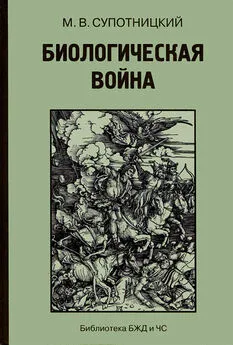
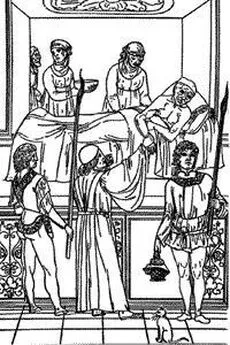

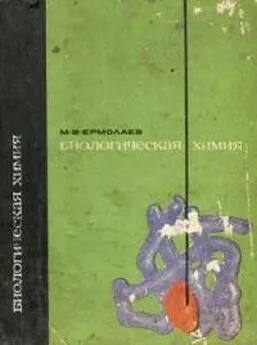

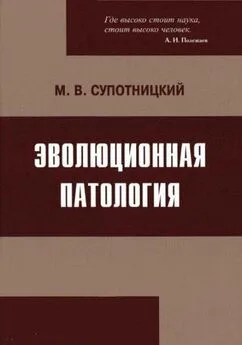
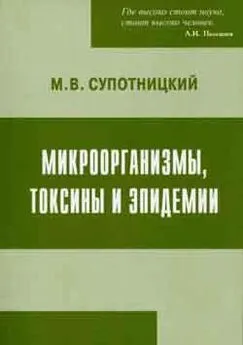
![Михаил Супотницкий - Очерки истории чумы. Книга II. Чума бактериологического периода [без иллюстраций]](/books/1084186/mihail-supotnickij-ocherki-istorii-chumy-kniga-ii.webp)
![Михаил Супотницкий - Очерки истории чумы. Книга I. Чума добактериологического периода [без иллюстраций]](/books/1084187/mihail-supotnickij-ocherki-istorii-chumy-kniga-i-ch.webp)
